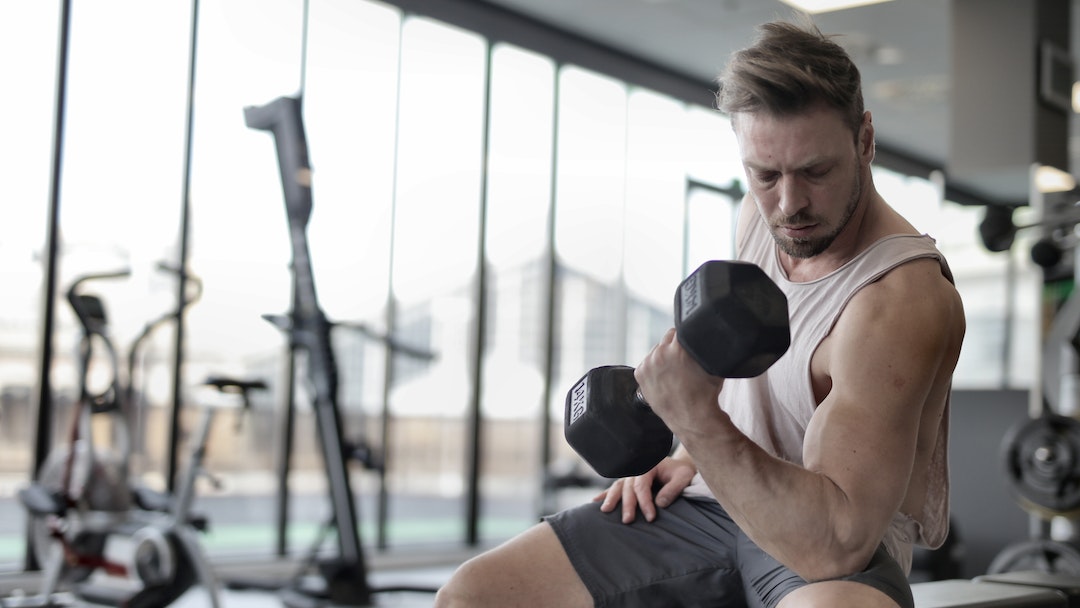Most people use their rotator cuff muscles without ever thinking about them. That is until something goes wrong. Then you realize just how important that little muscle group is – and how much pain and frustration a torn rotator cuff can cause.
If you have a rotator cuff injury, you may wonder how to heal it naturally. You can do several treatments at home that can help you heal quickly and get back to your normal activities.
Here are some ways you can heal a torn rotator cuff naturally at home:
Rest
A torn rotator cuff, like any other kind of injury, necessitates time off from exercise to allow the healing process to occur. When you first injure your rotator cuff, taking a few days off from all activities that stress the area is essential. Rest gives your body a chance to start the healing process and reduce inflammation.
Is a rotator cuff injury keeping you from enjoying daily activities? The Hemp Muscle Rub from Herbal Ice can help relieve pain and inflammation so that you can heal naturally at home.
Apply Heat
After the initial rest period, you can start to apply heat to the area to help relax muscles and improve blood flow. Heat therapy is beneficial in the early stages of healing when stiffness and pain are significant issues.
One of the best ways to apply heat is to use a heating pad set on low or warm. Place the heating pad on your shoulder for 15-20 minutes, several times per day. You can also take a warm shower or bath to help loosen up your muscles and reduce pain.
Related: Rhomboid Muscle Pain: Symptoms & Treatment Guide
Ice Therapy
In addition to heat, ice can also help treat a rotator cuff injury. Ice helps reduce inflammation and pain, especially in the first few days after you injure your rotator cuff.
Apply a large ice pack to the area for 20 minutes at a time, several times per day. Wrap the ice in a towel can help protect your skin.
Eat an Anti-Inflammatory Diet
What you eat plays a significant role in inflammation and pain levels throughout your body, so sticking to an anti-inflammatory diet is important if you want to heal your rotator cuff injury quickly.
Focus on eating a lot of fruits, veggies, and whole grains while avoiding processed foods, sugar, and fatty foods. You should also drink lots of water to stay hydrated throughout the day.
Related: How to Reduce Inflammation in the Body Fast

Stretch
Stretching can help you get a better range of motion and reduce discomfort in the muscle. You should stretch before and after exercising or engaging in any activity that stresses your rotator cuff.
Here are some stretches you can try:
- Crossover arm stretch. To do a crossover arm stretch, you must stand with your feet shoulder-width apart. Put your left arm over your right arm and clasp your hands together. Gently pull your arms across your chest until you feel a stretch in the shoulder muscles. Wait thirty seconds and then do the same thing on the other side.
- Doorway stretch. Stand in the doorway with your feet close together to do a doorway stretch. Put your left arm against the doorframe and lean forward until you feel a stretch. Hold for 30 seconds, and then repeat on the other side.
- Pendulum stretch. To do a pendulum stretch, you will need to stand with your feet shoulder-width apart and your arms at your sides. Bend forward and let your arms dangle. Use your good arm to swing your injured arm in a small circle. Gradually increase the circle size as you get more comfortable with the stretch. Do 10-15 circles in each direction.
Strengthen
After the pain and inflammation have subsided, you may want to start strengthening the rotator cuff muscles. Strengthening exercises help improve stability in the area and reduce your risk of re-injury.
Here are some exercises you can try:
- Standing row. To do a standing row, you will need to stand with your feet shoulder-width apart. Hold a weight in your left hand. Bend your arm so the weight is close to your shoulder. Use your right hand to pull the weight back towards your hip. Don’t lean forward and keep your back straight. Take a pause for 1-2 seconds, then slowly lower the weight to the starting position.
- Side-lying external rotation. Lie down on your side with the sore arm on top. Bend your elbow and hold a weight in your hand. Use your other hand to help lift the weight up and away from your shoulder. After you’ve completed the rep, pause for 1-2 seconds and then slowly lower the weight back to the starting position.
Topical Treatment

Several topical treatments can help speed up the healing process and reduce pain. You can try a topical treatment with hemp, like the Herbal Ice Hemp Muscle Rub. Hemp has anti-inflammatory and muscle-relaxing properties that can help reduce inflammation and pain in the area. The Herbal Ice Hemp Muscle Rub can offer fast relief with healing Chinese herbs, menthol, and 500 mg of hemp isolate. Use the applicator to roll the product onto the affected area and massage it until it’s absorbed.
Related: CBD and Drug Interactions: What You Need to Know
Final Thoughts
A torn rotator cuff can be incredibly painful and make it difficult to do the things you love. Try these home remedies if you’re looking for a natural way to heal your torn rotator cuff. You can get relief from pain and heal the injury with some time and patience.
If you’re suffering from a rotator cuff injury and the pain is keeping you from enjoying your daily activities, try Herbal Ice. Our hemp muscle rub combines the power of healing herbs, hemp, and menthol to stimulate blood flow and promote faster healing.



